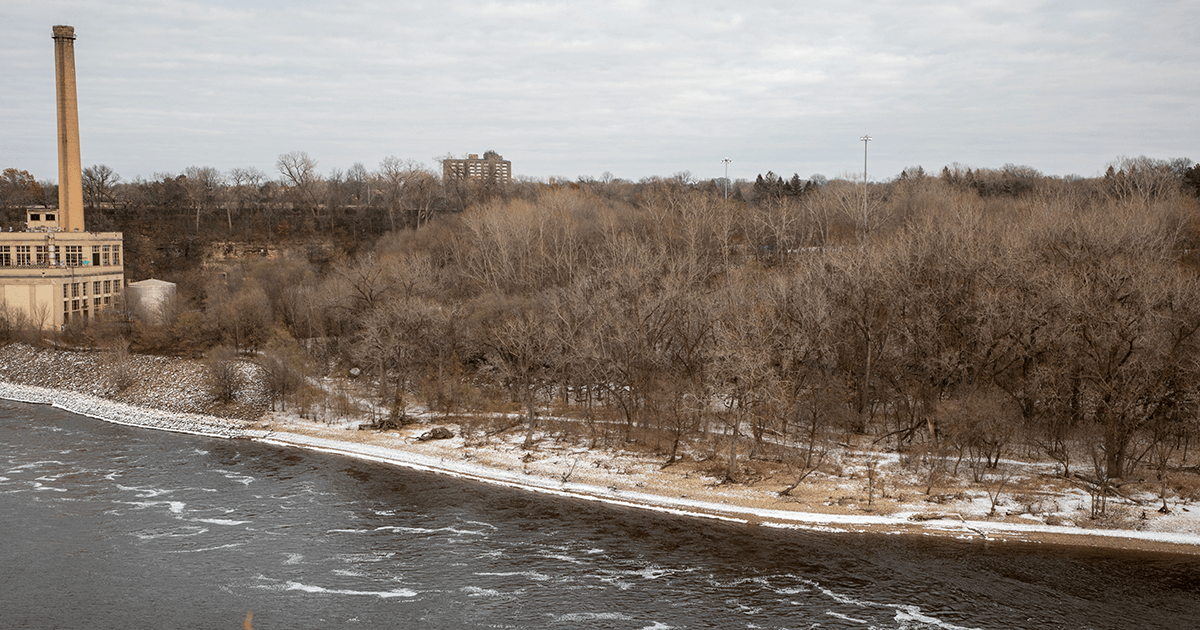Area C solar project could jeopardize dumpsite cleanup
For several months, FMR has raised concerns about the timing of a planned solar array installation on top of Ford's Area C dumpsite (the large mound along the St. Paul bluff shown in the photo above).
We've been concerned that this solar project — if installed before the forthcoming cleanup at Area C is complete — could jeopardize the ability to get the fullest cleanup of the toxic dumpsite possible.
Our River Corridor Program Director Colleen O'Connor Toberman recently wrote a letter to the Highland Villager, the newspaper serving the community where the dumpsite is located, outlining the risk of conflicting timelines for Area C's future. Here's the text of the letter:
Our letter in the Villager
Recently, the City of St. Paul and Ryan Companies have been promoting their plan to install solar atop Ford Area C. It’s a laudable goal, but there are good reasons not to rush this project.
Area C is a massive pile of hazardous waste and construction debris dumped by Ford Motor Company onto the Mississippi River floodplain adjacent to Hidden Falls Park. A solar array atop it could provide 20 percent of the power needs for the redevelopment at the main Ford site.
However, while the main Ford site has been fully remediated or cleaned up, Area C has not. We’re still in the data-gathering phase, and it will be one to two years before we even figure out our cleanup options. And adding a solar array atop the dumpsite could complicate cleanup.
This fall, Ford is installing additional monitoring wells to better assess the risks that the Area C pile poses. After a year or two’s worth of data, the Minnesota Pollution Control Agency (MPCA) will be able to lay out both the health and environment risks and a range of cleanup actions for Ford, the responsible party, to take.
The MPCA has indicated that at least modest remediation will be required, and many neighbors and FMR want the state to require Ford to remove their riverfront waste pile completely. (After all, they dumped into our community while profiting from our riverfront.)
Adding a solar array atop the waste could severely limit the range of cleanup options. Cost is one of the key criteria that the MPCA uses to select a cleanup option. If the array needs to be removed (temporarily or permanently) to clean up the site, this could add enough cost or time that any cleanup is dismissed as “too hard” or “too costly.”
Increasing our renewable energy production is crucial, but there are always tradeoffs to be mindful of. In this case, by rushing to build a relatively small solar array on a big pile of riverfront waste (before its impact is even fully studied) we could essentially cement the waste into place by making its removal more expensive.
Stay informed
If you'd like to receive occasional Area C e-mail updates, please let us know.
For more information about Area C in general, please visit fmr.org/ford or contact Colleen O'Connor Toberman, River Corridor Program Director, at ctoberman@fmr.org or 651.222.2193 x29.
Read more from the river land use and development blog.
(Featured photo by Tom Reiter)
